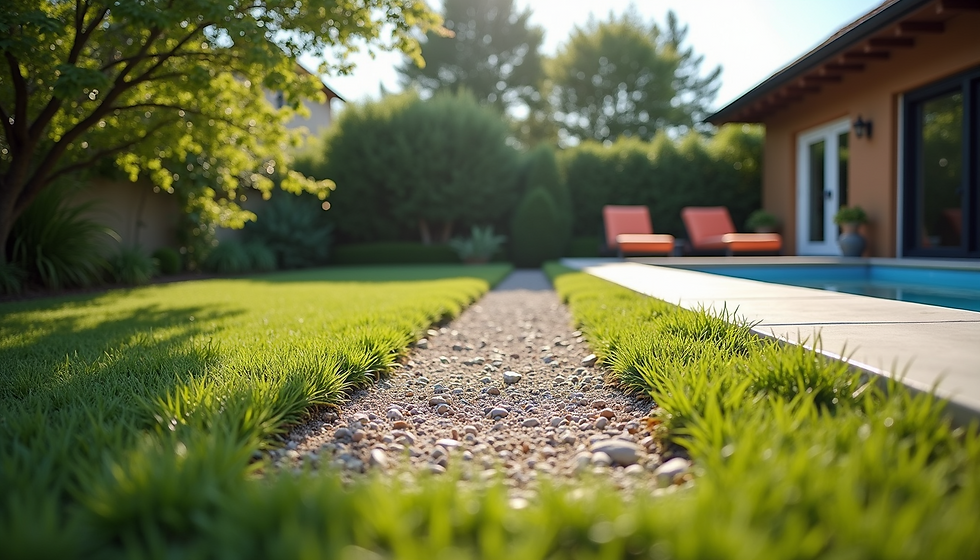Essential Pool Equipment Inspection Tips for Maintenance
- A Pool and Spa

- Oct 20
- 3 min read
Maintaining your pool equipment is crucial to ensure your pool stays clean, safe, and enjoyable all season long. Proper care and regular checks can prevent costly repairs and extend the life of your pool system. This guide will walk you through essential pool equipment maintenance tips, helping you keep everything running smoothly.
Understanding Your Pool Equipment Maintenance Tips
Pool equipment includes pumps, filters, heaters, chlorinators, and other components that work together to keep your pool water clear and balanced. Each piece requires specific attention to function optimally.
Pump: Circulates water through the filtration system.
Filter: Removes debris and contaminants.
Heater: Maintains comfortable water temperature.
Chlorinator: Adds chlorine to sanitize the water.
Regular maintenance involves cleaning, inspecting, and sometimes replacing parts to avoid breakdowns. For example, cleaning the pump basket weekly prevents clogging, while backwashing the filter monthly keeps it efficient.

Key Pool Equipment Maintenance Tips to Follow
To keep your pool equipment in top shape, follow these practical tips:
Inspect and Clean Filters Regularly
Filters trap dirt and debris. Depending on the type (sand, cartridge, or DE), cleaning frequency varies. Cartridge filters should be rinsed every 2-6 weeks, sand filters backwashed monthly, and DE filters backwashed when pressure rises 8-10 psi above normal.
Check Pump and Motor Function
Listen for unusual noises and check for leaks. Lubricate pump seals and ensure the motor is free of debris. Replace worn-out parts promptly.
Monitor Water Chemistry
Balanced water reduces strain on equipment. Test pH, chlorine, alkalinity, and calcium hardness weekly. Adjust chemicals as needed to prevent corrosion or scaling.
Inspect Heater Components
Clean heater filters and check for rust or leaks. Schedule professional servicing annually to maintain efficiency.
Examine Pool Covers and Skimmers
Remove debris from skimmer baskets weekly. Check pool covers for tears or damage that could allow dirt into the water.
Winterize Equipment Properly
In colder climates, drain water from pumps, filters, and heaters to prevent freezing damage. Store removable parts indoors.

How often does pool equipment need to be replaced?
Knowing when to replace pool equipment is as important as maintaining it. Here are general guidelines:
Pumps: Typically last 8-12 years. Signs of failure include loud noises, leaks, or reduced water flow.
Filters: Sand filters last 5-7 years; cartridge filters 1-3 years; DE filters 5-10 years.
Heaters: Usually last 10-15 years but may need earlier replacement if corrosion or frequent breakdowns occur.
Chlorinators: Lifespan varies widely, often 5-10 years depending on usage and maintenance.
If you notice persistent issues despite regular maintenance, it may be time to invest in new equipment. Upgrading can improve energy efficiency and reduce operating costs.

Why Regular Pool Equipment Inspection Matters
A thorough pool equipment inspection helps identify potential problems before they escalate. Inspections should include:
Checking for leaks or cracks in pipes and fittings.
Verifying electrical connections are secure and safe.
Testing pressure gauges and flow meters.
Ensuring timers and automation systems function correctly.
Scheduling inspections at the start and end of the swimming season is ideal. This proactive approach saves money and keeps your pool safe for swimmers.
Tips for DIY Pool Equipment Maintenance
While some tasks require professional help, many maintenance activities can be done yourself:
Clean pump baskets and skimmer baskets weekly.
Backwash or clean filters as recommended.
Test and adjust water chemistry regularly.
Lubricate O-rings and seals with silicone-based lubricant.
Remove debris from around equipment to ensure proper ventilation.
Always turn off power to equipment before performing maintenance. Keep a maintenance log to track cleaning, repairs, and replacements.
Final Thoughts on Keeping Your Pool Equipment in Top Shape
Proper care of your pool equipment ensures a sparkling, safe swimming environment. By following these maintenance tips, you can avoid unexpected breakdowns and costly repairs. Remember, regular cleaning, timely inspections, and knowing when to replace parts are key to a long-lasting pool system.
Investing a little time in maintenance now will pay off with years of enjoyment in your pool. Stay proactive and keep your pool equipment running smoothly all year round.




Comments